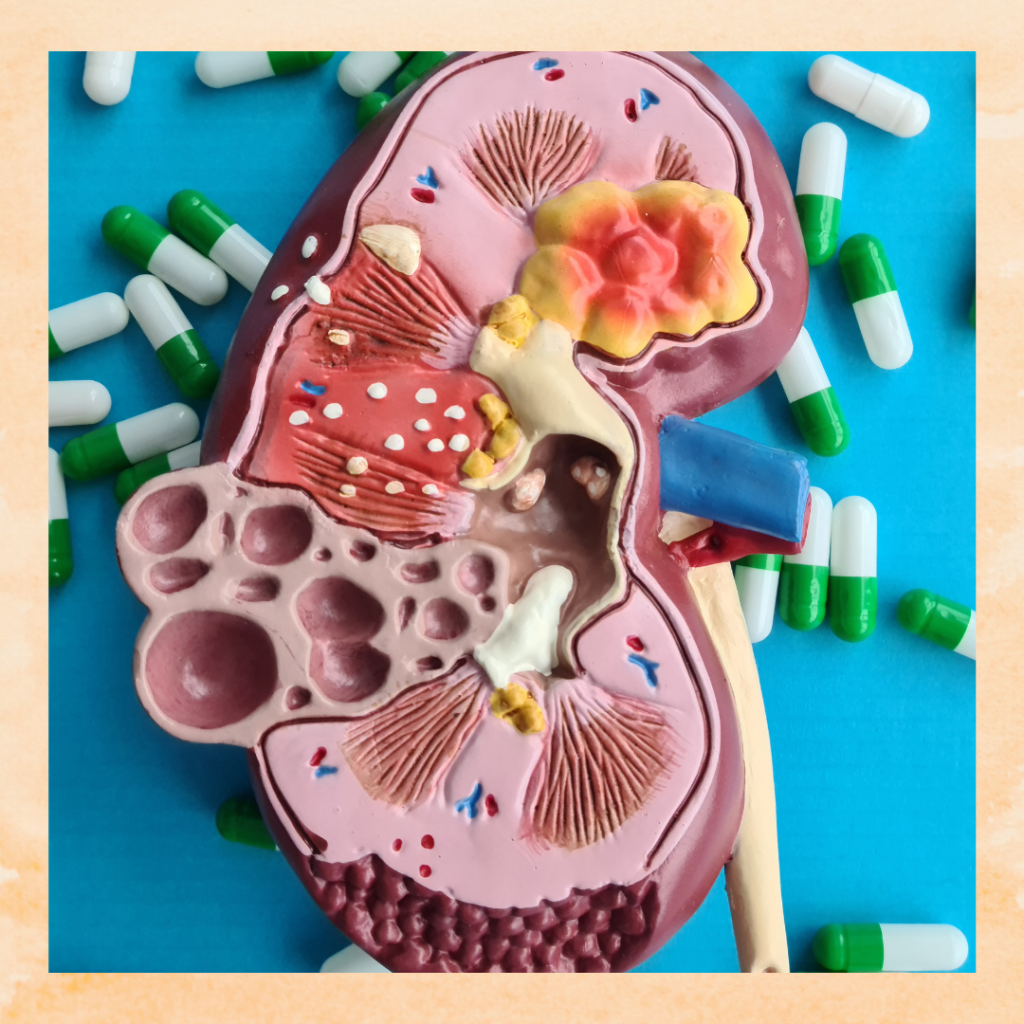Acute Kidney Injury: Inpatient Management and Treatment
Contact Hours: 1.5
Author(s):
Karson Carter BSN, RN, CPN
Course Highlights
- In this Acute Kidney Injury: Inpatient Management and Treatment course, we will learn to recognize 3 clinical signs of acute kidney injuries.
- You’ll also learn 3 common causes of acute kidney injuries.
- You’ll leave this course with a broader understanding of diagnostic tests used to diagnose an acute kidney injury.
Introduction
Acute Kidney Injuries (AKI) are common in hospitalized patients. Studies have shown that they make up 7% of hospital admissions and 30% of ICU admissions (1). Acute kidney injuries have been shown to correlate with hospitalized mortality and an increased length of hospital stay for the patient (2). These, in turn, can cause an increase in healthcare costs (2).
In 2020, the rate of hospitalizations due to AKIs was lower than in 2019 (3). However, patients with AKI’s requiring dialysis were higher in 2020 than the previous year (3). The rate of mortality has decreased in patients with AKIs over the past several years, but it is still high and varies with the severity of the AKI (2).
According to these statistics, acute kidney injuries have profound implications for patients, and nurses need to be aware of this condition’s signs, symptoms, and complications. Patients who experience an acute kidney injury are at risk for developing chronic kidney disease (2). This course is designed to increase knowledge of this condition to better care for our patients and provide them with accurate education.
What is an Acute Kidney Injury?
The term Acute Kidney Injury refers to the decrease in renal function that is measured by the glomerular filtration rate (GFR) (1). This condition was referred to as acute renal failure (1). The diagnosis of an acute kidney injury is based on meeting specific criteria.
The Kidney Disease Improving Global Outcomes group developed and published criteria for diagnosing acute kidney injury (2).
- A serum creatinine level increase to at least 0.3mg/dL in 48 hours
- Serum creatinine level is 1.5 times higher than the baseline, which was taken within the past 7 days.
- A decrease in urine output of less than 0.5 mL/kg/hr. for 6 hours (1)(2).
The patient must meet at least one criterion for diagnosing acute kidney injury. At the onset of the kidney injury, the creatinine and blood urea nitrogen (BUN) may be within normal limits [1]. The decrease in urine output may be the first sign of acute kidney injury (1).
Ask yourself...
- Why did the name change from acute renal failure to acute kidney injury?
- How early can an acute kidney injury be diagnosed?
- Can early recognition of acute kidney injury improve the survival rate?
Epidemiology
Acute kidney injury is a very common condition. Studies have shown that in the United States, 1% of all hospital admissions have an acute kidney injury (1). This condition can impact the management and treatment of the patient. Diagnostic tests that use contrast dye are often delayed because the dye can cause damage to the kidneys (1).
A significant number of medications are excreted through the kidneys, so if the kidneys are not functioning normally, the drug’s metabolism will be reduced. Drug doses may need to be altered, or kidney function labs may need to be monitored closely.
Ask yourself...
- Why are acute kidney injuries so prevalent in the United States?
- How can acute kidney injuries affect how other existing conditions are treated?
Pathophysiology/Etiology
Pathophysiology and etiology go hand in hand, as the cause can determine the pathophysiology of an acute kidney injury. There are three types of acute kidney injuries, which can determine the condition’s pathophysiology.
Pre-Renal – caused by a lack of perfusion to the kidney. The decreased perfusion can be attributed to hypovolemia or hypotension (1). The decreased perfusion can also be due to selective hypoperfusion from an aortic dissection or renal artery stenosis (1). With prerenal acute kidney injuries, the glomerular and tubular function stays within normal limits (1).
Some examples of this form can be renal vasoconstriction due to NSAID use or iodinated contrast (1). Also, decreased cardiac function from congestive heart failure or acute myocardial infarction can cause this form of acute kidney injury (2). Anesthesia and surgical operations can increase vascular resistance, which can cause prerenal acute kidney injury.
Intrinsic – affects the glomerular tubular functions (1). The injury of the glomerulus or tubular injury releases vasoconstrictors from renal pathways (1). Sepsis and prolonged renal ischemia are common causes.
Medications such as vancomycin and aminoglycosides can cause acute tubular necrosis (1). It has been shown to be the most common cause of acute kidney injury in hospitalized patients (1).
Glomerulonephritis can be caused by autoimmune diseases such as systemic lupus erythematosus (1). Interstitial nephritis can be caused by medications such as NSAIDS, diuretics, and proton pump inhibitors (1)(2).

Acute kidney injury due to acute tubular necrosis is broken down into four phases (4)(5).
The phases walk through what is happening at a cellular level during the injury (4):
- Initiation phase: Blood flow is reduced to the kidney, which reduces ATP accessibility (4). The cell suffers structural damage, which leads to the next phase and the inflammatory process (4).
- Extension phase: Consists of the inflammatory process and hypoxia (4). The effects are in the medullary part of the kidney (4). The changes reduce the glomerular filtration rate and release chemokines and cytokines (4). Counteracting the inflammatory process at this phase is important for intervention (4).
- Maintenance phase: Cell repair begins. The blood vessels start restoring their standard structure (4).
- Recovery phase: Organ function improves (4). The extent of the normal function is related to the cellular activity during the injury (4).
Postrenal: This is caused by an obstruction that affects the filtration system (1). Blood clots, renal calculi, and tumors are common causes of obstructions (1). If the obstruction is one-sided, it may not be an acute kidney injury because the normally functioning kidney may compensate for the impaired kidney (1).
Because kidneys are highly sensitive, acute kidney injuries are usually caused by other systemic causes such as septic shock, cardiogenic shock, post-major surgical intervention, and hypovolemia (2).
Ask yourself...
- What are the three forms of acute kidney injury?
- What are some causes of intrinsic acute kidney injuries?
- What is the difference between pre-renal and post-renal?
Case Study
A 55-year-old female presents to the emergency department with lower back pain, nausea, and vomiting. Pt has a past medical history of type II diabetes, hypertension, and anxiety. Pt reports a decrease in urine output over the last day. Urinalysis reveals red blood cells present in the urine. Renal ultrasound shows right renal calculi—creatinine level of 2.9mg/dL and BUN 20mg/dL.

Ask yourself...
- In this case study, what form of AKI is the patient most likely to have?
- Which risk factors for acute kidney injury does the patient have?
- What is the first phase of an acute kidney injury?
- When does the diuretic phase occur?
- In which phase can fluid overload occur?
Case Study 2:
A 4-year-old male presents to the pediatric emergency department, brought in by mom for lethargy, vomiting, and decreased urine output. Mom reports the patient has had vomiting and diarrhea for 3 days and is refusing to eat or drink. The mom states the patient voided once in the last 12 hours, and it was dark amber. Creatinine level of 2.1mg/dL and BUN 22mg/dL.
Clinical Signs and Symptoms
The signs and symptoms of acute kidney injury depend on the cause and severity of the injury (6). A mild acute kidney injury patient may be asymptomatic (6).
Patients with a more severe acute kidney injury may experience peripheral or periorbital edema, shortness of breath, oliguria, confusion, nausea and vomiting, and back pain (6).
Seizures can develop in severe cases (6).
There are four phases of acute kidney injury:
- Onset Phase: This phase includes the initial injury, which causes decreased renal perfusion (6). These causes can include dehydration, infection, or blood loss (6). The renal tissue oxygenation has reduced by 25%, and the urine output has declined to less than 0.5ml/kg/hr. The phase varies from hours to up to days (6).
- Oliguric Phase: Oliguria occurs within 1 to 7 days of the initial renal injury (6). This phase may last 10 to 14 days or, in some severe instances, up to months (6). The longer the phase duration, the less chance there is for recovery of renal function (6). In some cases, patients do not experience oliguria (6). Fluid overload is seen in this phase.
- Diuretic Phase: The urine output increases to around 1 to 3 liters (6). Due to the increased fluid loss, hypovolemia and hypotension may be side effects of this phase (6). This phase can last 1 to 3 weeks (6). Electrolytes, BUN, and creatinine usually start to be within normal limits (6).
- Recovery Phase: This phase is when kidney function improves, and the GFR may increase while the BUN and creatinine return to normal limits (6). It can take up to a year for a patient to recover (6). In some severe cases, the patient is unable to recover, and the condition leads to end-stage renal disease (ESRD) (6). This can depend on the patient’s comorbidities and response to treatment (6).
Ask yourself...
- What form of AKI could this patient most likely be experiencing?
- What would be the first action to treat this acute kidney injury?
- Are there any other diagnostic tests that should be performed?
Diagnostic Testing
When diagnosing acute kidney injuries, history and physical play a central role. Obtaining the history from the patient about events that took place prior to the hospitalization is key to developing a treatment plan. If the patient experienced diarrhea or vomiting, the provider needs to focus on fluid resuscitation (1). A medication history should be obtained to identify if the patient is on any medications that can be nephrotoxic.
Lab tests can be helpful in diagnosing and identifying the etiology of acute kidney injury. However, the serum creatinine often takes a couple of days to increase after the initial kidney injury, so this cannot be used as an early diagnostic tool (2). The urine output can be used to identify an acute kidney injury; however, it can be difficult to assess without using a urinary catheter (2).
A complete blood count can determine if infection or anemia is present (6). A urinalysis can be used to diagnose acute kidney injury, as this can help determine the type. Urine that is brown in color and sediment may indicate acute tubular necrosis (6). White blood cells may indicate pyelonephritis [6]. Red blood cells in the urine may be due to glomerular nephritis (6).
Imaging studies can be used to diagnose acute kidney injury. Renal ultrasounds can determine if there is an obstruction (6). A CT scan without contrast can identify nephrolithiasis or urolithiasis (1).
A renal biopsy may be warranted if the patient’s kidney function rapidly decreases without knowing the cause (1). It can also be used if the patient’s kidney function has not normalized for a prolonged period (6).
Ask yourself...
- Why does it take time for the creatinine and BUN to elevate after the initial injury?
- What can the presence of red blood cells in urine indicate?
- Why would a renal ultrasound be used when diagnosing an acute kidney injury?
Inpatient treatment
The treatment of acute kidney injury can depend on its form. Generally, fluid resuscitation is the first line of treatment unless it is contraindicated for the patient (1).
The urine and kidney function should be closely monitored (1). If the kidney function improves after fluid, it is most likely the result of a prerenal acute kidney injury (1). For patients with acute tubular necrosis, their kidney function does not rapidly improve after fluid, and can take up to months to improve (1).
Diuretics may be required if the patient is fluid overloaded with acute tubular necrosis (1). Nephrotoxic drugs should be stopped, and other medications should be renally dosed (1). 20- 40% of acute kidney injuries have been attributed to nephrotoxic medications as the cause (2). This number has been said to increase to 60% in patients with advanced age (2).
Dietary changes are also necessary to manage acute kidney injuries (1). Reducing phosphorus and potassium in the diet is necessary (1).
The type of fluid used during fluid resuscitation has been debated. Both crystalloids and colloids are used during fluid resuscitation (2). Common crystalloids are saline, lactated ringers, and PlasmaLyte (2). Colloids can be albumin and starches (2).
A study investigated patients who received colloids. They were less likely to need vasopressors, mechanical ventilation, and mortality decreased (2). Albumin requires less volume than crystalloids for fluid resuscitation (2).
Renal replacement therapy in the intensive care unit may be necessary in patients with severe acute kidney injury [2]. Continuous RRT (CRRT) is a common type of renal support given to patients with acute kidney injury (2). RRT can have adverse effects on the patient, such as infection due to the dialysis catheter, risk of thrombosis, and risk of hemorrhage (7). Studies have shown that the intensity of the RRT can slow the recovery process from acute kidney injuries (7).
Nursing management of a patient with acute kidney injury can include monitoring urine output and vitals. The heart and lungs should also be auscultated when performing a physical assessment (8).
Mental status and level of consciousness should be monitored [8]. Monitor for any signs of periorbital and dependent edema (8). The head of the bed should be elevated (8).
Ask yourself...
- What is the first line of treatment for an acute kidney injury?
- What are the differences between colloids and crystalloids?
- Are there any adverse effects of albumin?
Patient Education
Acute kidney injuries require follow-up and education to complete the recovery process. As nurses we must provide our patients with education so they can make decisions about their healthcare and to improve their recovery process. Education can cut down on readmissions and healthcare costs.
Dietary education should be included in patient education. Patients should be encouraged to avoid tomatoes, oranges, and bananas and to follow a low sodium diet (8). Smoking should be discouraged (8).
Certain medications like NSAIDs should be avoided. Follow-up is necessary with their provider and repeat lab work such as creatinine, BUN, and electrolytes (8).

Ask yourself...
- Can education prior to discharge prevent readmissions for patients diagnosed with acute kidney injuries?
- Are there dietary restrictions following an acute kidney injury?
- Who is responsible for providing education to patients?
Conclusion
An acute kidney injury is a common condition that can produce lasting effects for a patient. Acute kidney injuries can make managing other conditions more difficult. Diagnosing an AKI should include a history of physical and kidney function tests and clinical symptoms.
Early recognition of acute kidney injury can prevent long-term damage. As healthcare providers, it is essential to identify the signs and symptoms of acute kidney injury to provide early interventions for our patients.
References + Disclaimer
- Goyal, A., Daneshpajouhnejad, P., Hashmi, M., and Bashir, K. (2023) Acute Kidney Injury. In StatPearls. StatPearls [Internet]. Retrieved from https://www.ncbi.nlm.nih.gov/books/NBK441896/
- Gameiro, J., Fonseca, J., Outerelo, C., and Lopez, J. (2020) Acute Kidney Injury: From Diagnoses to Prevention and Treatment. Journal of Clinical Medicine. 9(6):1704. Retrieved from https://www.ncbi.nlm.nih.gov/pmc/articles/PMC7357116/
- United States Renal Data System. (2022) USRDS Annual Data Report: Epidemiology of kidney disease in the United States. National Institutes of Health, National Institute of Diabetes and Digestive and Kidney Diseases, Bethesda MD, 2022. Retrieved from https://usrds-adr.niddk.nih.gov/2022/chronic-kidney-disease/4-acute-kidney-injury
- Sakharam, S., Venkateswara, S. (2022) Pathophysiology of acute kidney injury on a molecular level A brief review. MGM Journal of Medical Sciences. 9(4): p 577-584, Oct-Dec 2022. Retrieved from https://journals.lww.com/mgmj/fulltext/2022/09040/pathophysiology_of_acute_kidney_injury_on_a.21.aspx
- Basile, D., Anderson, M., and Sutton, T. (2012) Pathophysiology of Acute Kidney Injury. Compr Physiol. 2012 April l; 2(2): 1303-1353. Retrieved from https://www.ncbi.nlm.nih.gov/pmc/articles/PMC3919808/
- American Nephrology Nurses Association. (2019). Acute Kidney Injury Factsheet Clinical Issues. American Nephrology Nurses Association. Pitman NJ. Retrieved from https://www.annanurse.org/sites/default/files/download/reference/practice/akiClinicalFactSheet.pdf
- Lobo, V. (2020) Renal Replacement Therapy in Acute Kidney Injury: Which Mode and When? Indian J Crit Care Med. 2020 Apr; 24(Suppl3): S102-S106. Retrieved from https://www.ncbi.nlm.nih.gov/pmc/articles/PMC7347062/
- Goyal A., Daneshpajouhnejad, P., Hashmi, M., Bashir, K., and John, B. (2023). Acute Kidney Injury (Nursing). In StatPearls. StatPearls [Internet]. Retrieved from https://www.ncbi.nlm.nih.gov/books/NBK568593/
Disclaimer:
Use of Course Content. The courses provided by NCC are based on industry knowledge and input from professional nurses, experts, practitioners, and other individuals and institutions. The information presented in this course is intended solely for the use of healthcare professionals taking this course, for credit, from NCC. The information is designed to assist healthcare professionals, including nurses, in addressing issues associated with healthcare. The information provided in this course is general in nature and is not designed to address any specific situation. This publication in no way absolves facilities of their responsibility for the appropriate orientation of healthcare professionals. Hospitals or other organizations using this publication as a part of their own orientation processes should review the contents of this publication to ensure accuracy and compliance before using this publication. Knowledge, procedures or insight gained from the Student in the course of taking classes provided by NCC may be used at the Student’s discretion during their course of work or otherwise in a professional capacity. The Student understands and agrees that NCC shall not be held liable for any acts, errors, advice or omissions provided by the Student based on knowledge or advice acquired by NCC. The Student is solely responsible for his/her own actions, even if information and/or education was acquired from a NCC course pertaining to that action or actions. By clicking “complete” you are agreeing to these terms of use.
Complete Survey
Give us your thoughts and feedback!
